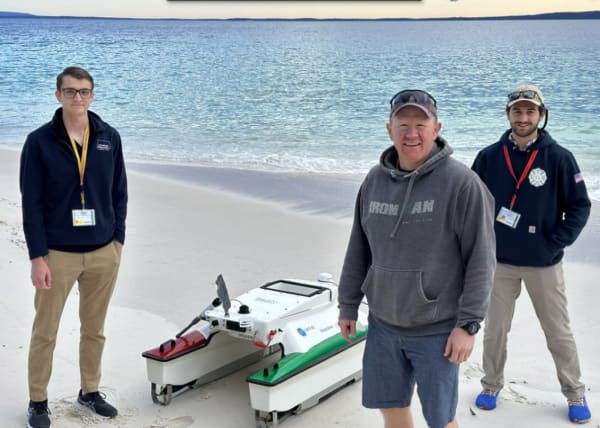Saab Send Students Diving into Underwater Robotics at the MIT Marine Autonomy Program
Saab's partnership with MIT is making waves in marine robotics and autonomy. Saab has partnered with the university to fund the research and tuition for three postgraduate students in MIT’s Marine Autonomy Lab. In the past year, these students have studied and advanced technologies in marine robotics technology, underwater communications and sensor and navigation algorithms. The partnership promotes innovation and education, ensuring that students can explore underwater robotics technology.
In 2022, Saab began a partnership with the Massachusetts Institute of Technology (MIT) to fund the research and tuition for postgraduate students Tyler Paine, Kevin Becker, and Ray Turrisi in MIT’s Marine Autonomy Lab. In the past year, these students have studied and advanced technologies in marine robotics technology, underwater acoustic communications and sensor and navigation algorithms.

The Marine Autonomy Lab at MIT is dedicated to making waves in marine robotics and autonomy algorithms used in both autonomous surface vehicles (USVs) and autonomous underwater vehicles (AUVs). The work also includes underwater acoustic communications, sensing of the marine environment, detection and sensing of man-made objects and other vessels and navigation and localization algorithms.
The partnership between Saab and MIT is a natural fit – both Saab and the university use the same software approach to develop autonomy on robotic platforms, particularly autonomous marine vehicles. Dr. Mike Benjamin, principal researcher with MIT’s Marine Autonomy Lab, created the autonomy software architecture in 2004.
“My students have been able to work on some great projects with AUVs because of Saab’s gift funding. We’ve been looking into things like how unmanned vehicles can quickly find deep channels in a body of water, automation autonomy simulation toolboxes, and updating MIT’s Sea Beaver AUV prototype,” said Dr. Benjamin.
Saab’s Cranston, Rhode Island and Quincy, Massachusetts facilities are both dedicated to the company’s Autonomous and Undersea Systems (AUS) division. The Autonomous and Undersea Systems division provides U.S.-specialized variants of proven Saab maritime products to support domestic commercial and military needs.
“Innovation is key at Saab – it’s at the core of everything we do. Our partnership with MIT doubles down on our investment in technological innovation, especially when it comes to fundamental research, which helps to create the next generation of capabilities and the future of our industry. Likewise, we’re proud to partner with MIT’s Marine Autonomy Lab to seed the next generation of scientists and engineers in this field,” said Dr. Julia Filiberti Allen, Chief Scientist at Saab, Inc.
This MIT micro-UUV research ties directly to Saab’s product development for STEM micro-UUV efforts and is also synergistic with future commercial micro-UUV and autonomy efforts.
Saab will continue to provide ongoing funding to MIT’s Marine Autonomy Lab as students dive deep into underwater robotics technology. The company also hopes this funding inspires students to consider career paths in the U.S. defense & maritime robotics industries.
This is not the only U.S. university partnership for Saab, Inc. The company also has a long-standing partnership with Purdue University in Indiana and recently announced the opening of a 5G network “lab to life” proving ground for aviation solutions.